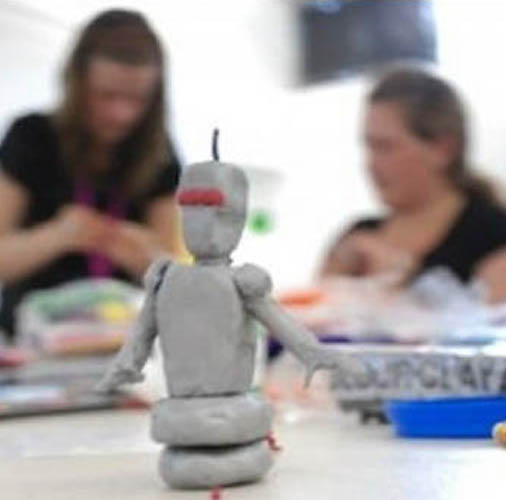by Jennie Stoddart, October 2011
What I think is missing from most digital inclusion initiatives, and where the arts can matter, is the bigger picture. Once a person is ‘included’, in other words is basically able to get online somehow, what will happen? What will they actually do, and supported by whom, to meaningfully change their life, to truly make the internet a ‘transformative power’?
I think it is true, but something that is not yet really being taken advantage of, that art has a unique power – the inspirational qualities to motivate people to get online, and the ability to provide deeper, more varied and enriching digital participation opportunities. But more than that is the importance of developing digital literacy. This is something which is about far more than functional IT skills; it’s about understanding how we relate to each other, contribute to society, make and share meaning, in a current and future digital context. It’s about questioning what we’re being told, being able to make judgements and form independent and collective opinions.
It might be worth, at this point, expanding on what I’m referring to when I talk about ‘socially engaged artistic practice’. I consider the term to encompass a significant variety of practical processes and activities. What defines the genre for me is shared transformative journeys, and the multi-way relationships between artists, collaborators and participants, from diverse cross-sections of society. It’s not necessarily about the recognised ‘community arts’ model of workshops and co-created products, or limited to a community’s influence and input into an artist’s own product. The value of the process or experience itself to everyone involved is what matters. My own strong belief is that the relationship between the artistic processes and priorities of artists who work in such fashions, and the potential of such projects to act as agents for social change, is what art in the 21st century should be about, and what artists should strive to achieve.
My second proposition is something that is not specific to the arts. It is that most of the current campaigns to get people online aren’t really addressing the specific barriers to participation for those with disabilities, because these barriers are often more complex and individual, and require more bespoke solutions – it isn’t enough to just make things cheaper or more readily available and get people to pass on basic skills.
There are two pieces of research, The use of the Internet by Disabled People: Barriers and Solutions and Next Generation Services for Older and Disabled People, released in 2009 and 2010 respectively, that specifically address issues surrounding the digital exclusion of people with disabilities, and the barriers they face to getting online, as well as the benefits of doing so. Both reports identify these specific barriers, and the challenges being faced by individuals and groups trying to address them. These include accessibility, logistics, such as seamless technical integration into familiar support services, and the dangers of over-reliance or unwise use of new technologies (for example increased isolation due to the replacement of face-to-face support systems with online equivalents, the temptation to rely on a new technology or service to do things which an individual is otherwise independently capable of, or excessive reliance on fallible technological systems without awareness of the potential for technical faults).
But what is actually being done as a result of these findings? Although the issues have been identified, what tangible evidence is there that the big campaigns are addressing them, and are such broad-ranging meant-for-everyone schemes even suitable for the specificities of these issues? If not, can the smaller, more bespoke efforts ever go on to achieve wide spread impact, and is anyone attempting to help them do so? The 2010 report itself specifically notes problems within the digital service industry, such as “a need to move from trials and pilots of new services to implementation”, “standards for interoperability” that take into account personalised interfaces for different user needs, and the “major challenge” of motivating consumers who still see the internet as ‘not for them’.
Sometimes in order to get to a solution the journey needs to be messy and complex. When it comes to digital inclusion, I don’t think the issues at hand are something where simple neat boxes and homogenised activity will do, and I think the problems still facing those with disabilities (which we should not forget have been identified as one of a distinct number of key ‘at-risk’ groups since the earliest days of the national agenda) is a prime example of this. It’s all too easy, when the big overarching issue is so pressing, to find one potential solution and set off on an unchangeable path to fix it. However when that one big issue is in fact a myriad of smaller, different and changeable issues, actions need to be flexible and driven by passion and creativity. Artists and arts professionals know that we have that drive and ways of looking at and engaging with the world that can make a really worthwhile contribution to this and many other societal issues. The question is, does it matter to us? Do we just want others to show us what the digital world can do for us, or do we want to be architects of our own and of our wider communities’ opportunities?
Jennie Stoddart is Curator at Bedford Creative Arts. Prior to this, she worked at folly and she was co-founder ofBugs, a national research taskforce aiming to provide an in-depth examination of the value and impact of socially engaged digital arts practice on the digitally excluded.
(October 2011)
